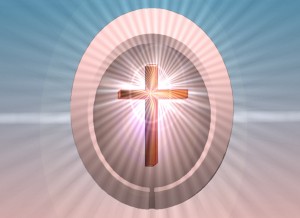Archive for the ‘Holy Dwelling’ Category
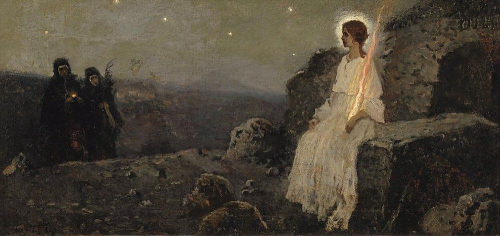
John 20:1-31
Early on the first day of the week, while it was still dark, Mary Magdalene came to the tomb and saw that the stone had been removed from the tomb.
So she ran and went to Simon Peter and the other disciple, the one whom Jesus loved, and said to them, ‘They have taken the Lord out of the tomb, and we do not know where they have laid him.’ Then Peter and the other disciple set out and went towards the tomb. The two were running together, but the other disciple outran Peter and reached the tomb first. He bent down to look in and saw the linen wrappings lying there, but he did not go in. Then Simon Peter came, following him, and went into the tomb. He saw the linen wrappings lying there, and the cloth that had been on Jesus’ head, not lying with the linen wrappings but rolled up in a place by itself. Then the other disciple, who reached the tomb first, also went in, and he saw and believed; for as yet they did not understand the scripture, that he must rise from the dead. Then the disciples returned to their homes.
But Mary stood weeping outside the tomb. As she wept, she bent over to look into the tomb; and she saw two angels in white, sitting where the body of Jesus had been lying, one at the head and the other at the feet. They said to her, ‘Woman, why are you weeping?’ She said to them, ‘They have taken away my Lord, and I do not know where they have laid him.’ When she had said this, she turned round and saw Jesus standing there, but she did not know that it was Jesus. Jesus said to her, ‘Woman, why are you weeping? For whom are you looking?’ Supposing him to be the gardener, she said to him, ‘Sir, if you have carried him away, tell me where you have laid him, and I will take him away.’ Jesus said to her, ‘Mary!’ She turned and said to him in Hebrew, ‘Rabbouni!’ (which means Teacher). Jesus said to her, ‘Do not hold on to me, because I have not yet ascended to the Father. But go to my brothers and say to them, “I am ascending to my Father and your Father, to my God and your God.” ’ Mary Magdalene went and announced to the disciples, ‘I have seen the Lord’; and she told them that he had said these things to her.
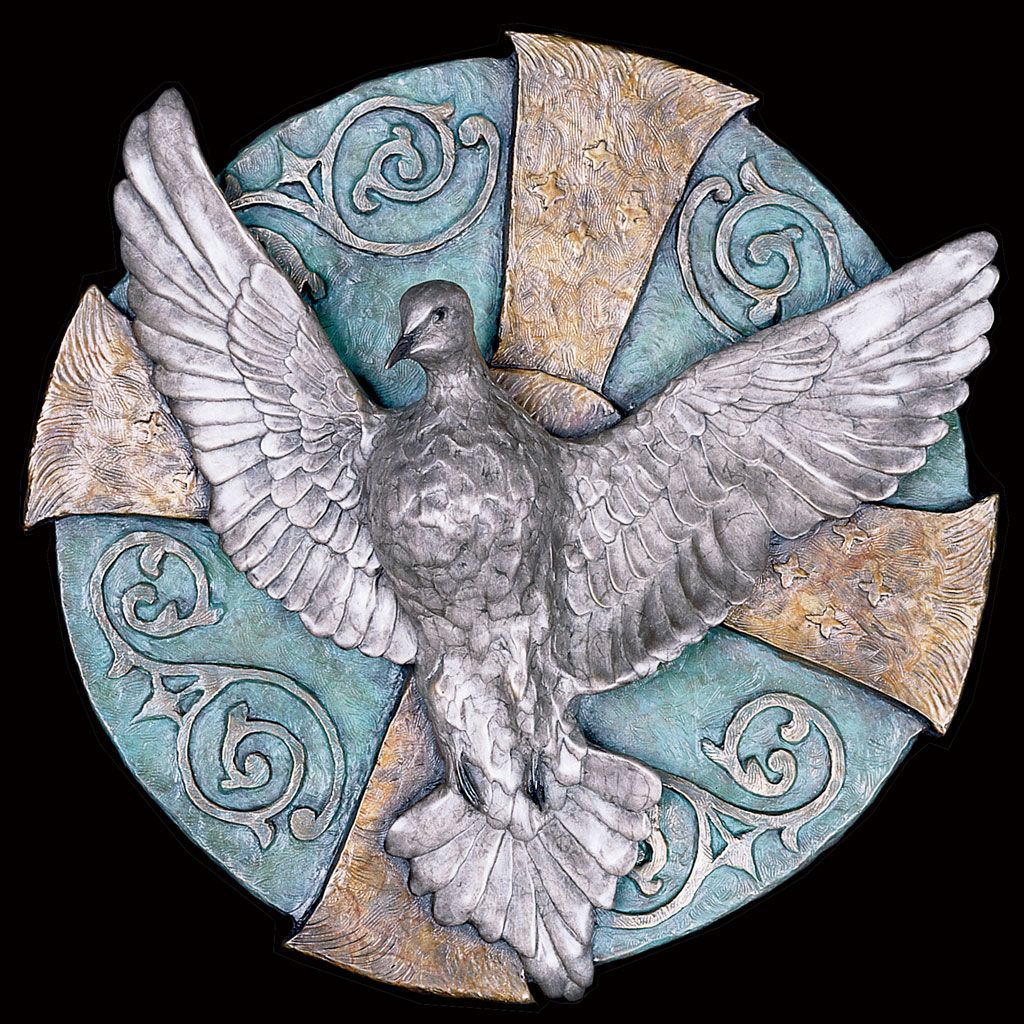
THE PRAYER OF HOLY SILENCE
When the Whole Creation groans in travail . . .
During the earliest days of Christianity, when the followers
of Jesus the Christ were under nearly constant persecution, the faithful were often
unable to gather together to celebrate the mysteries of the Eucharist. Drawing
on their inheritance from Jewish Temple and Synagogue, they continued to pray
morning and evening, often simply in family groupings or in solitude.
As the worst of the Roman persecutions abated, and
Christianity became a legal religion in the empire, regular gatherings in
churches were allowed and even encouraged. Yet many souls—both men and women—felt
called to a more deliberate and intense discipleship, and retreated to the
mountains and deserts to follow Christ through their lives of prayer in
silence, solitude, and simplicity. Eventually these hermits and anchorites became
so numerous, they began to gather together to share their lives of prayer and
service while living communally in monasteries. One of the oldest of these (in continuous
existence since the early 4th Century) is the Monastery of St.
Catherine, at the base of Mount Sinai in the Egyptian desert. http://www.sinaimonastery.com/index.php/en/history
Throughout the long history of the Earth, humanity (indeed, all of God’s creation) has been threatened in various ways, times, and places by the Four Horsemen of the Apocalypse: Death, Famine, War, Pestilence. Our time is no different. The coronavirus, COVID-19, is simply the one we face in 2020. And just as our ancestors down through the ages have done, we will fight these threats with all our medical, technological, and political might.
And we will pray, just as they did—in our churches, synagogues, and temples (when we can), in our homes with our loved ones, in our solitudes (whether by choice, or by circumstance), remembering always the elderly, the homeless, and the dying, and those who care for them.
. . . we do not know how to pray as we ought,
but the Spirit himself intercedes for us with
sighs too deep for words.
Our prayers will take many forms: the familiar and beloved
words of liturgy and hymns, or the simpler prayer of the heart, “Lord, have
mercy.”. And perhaps we may find our prayers are “too deep for words” and we
fall silent before the immensity of the perils of our time, but even more
profoundly, we fall silent before the sure and certain hope that we and the
entirety of creation are eternally held in the Heart of God.
. .
. For I am sure that neither death, nor life,
nor angels, nor principalities,
nor things present, nor things to come, nor powers,
nor height, nor depth, nor anything else in all creation,
will be able to separate us from the
love of God in Christ our Lord.
(Romans
8: 22, 26, 38)
During this time of pestilence, and the “physical distancing” it requires, perhaps some of you may wish to explore an ancient and simpler form of daily prayer, which you may find in my BREVIARY of HOLY SILENCE on the page SONGS of the SOUL. I will be posting other relevant material on this page in the near future.
With blessings and prayer for God’s creation and all who dwell
therein.
The Rev. Susan Creighton
16 March 2020

HOLY DWELLING
‘Destroy this temple, and in three days I will raise it up.’
Monday in Holy Week, April 15, 2019
Cathedral of Notre-Dame de Paris engulfed by fire
(David)
Who am I, O Lord God, and what is my house,
that thou hast brought me thus far? . . .
For thou, My God, wilt build a house for him;
thy servant has found courage to pray before thee.
We build our temples of stone and wood,
walls wrapped with precious gold and jewels of glass;
They hold—and hide—our path to God,
and within, nourish our courage to pray.
(Jesus)
Do you see these wonderful stones and great buildings?
Not one stone will be left here upon another;
all will be thrown down. Destroy this temple,
and in three days I will raise it up.
When even temple stones are silenced,
God’s Voice sings on within our hearts,
raising within our Soul the Holy Dwelling
of Love that fire and flood can never doom.
(Mary Magdalene)
O, who will roll away the stone barring the tomb?
He is not here; he has risen! Go forth singing,
Allelulia! Christ is Risen!
He is Risen, indeed! Allelulia!
David: 1 Chronicles 17: 16, 25
Jesus: Mark 13:1-2; Mark 14:58
Mary Magdalene: Mark 16:1-7
(c) Susan Creighton 2019
I am pleased to announce the publication of my book, DeepLight: A Memoir of the Soul.

DeepLight: A Memoir of the Soul is a rich narrative of a contemporary woman’s spiritual quest. Within the context of her extensive study of religious and mystical traditions, and her experiences as a woman, a monastic, and an Episcopal priest, Susan Creighton weaves a spiral tapestry of memories, journal entries, and poetry. Her search for an authentic practice of contemplative prayer led across cultural, historical, and religious boundaries, but is most significantly shaped and enriched by the teachings of mystics like St. John of the Cross and the ancient tradition of Orthodox ascetical theology and spiritual practice. Now living under vows as an anchorite, her memoir shares with the reader ways in which the Jesus Prayer and other spiritual practices lead to deeper contemplative prayer as well as helping us develop greater discrimination and compassion for ourselves and others.
Endorsements:
“Creighton’s fascinating memoir, which reminds me of Thomas Merton’s Seven-Storey Mountain, explores how a brain disorder can affect, even intensify, spirituality.”
–Eve LaPlante, author of Seized
“If anyone can speak truly about a personal pilgrimage into an ‘anchorhold’ of profound faith, it is Susan Creighton. . . . Her story will speak to any seeking soul as it has to mine.”
–Luci Shaw Author of Thumbprints in the Clay
“To write about the soul, you have to know it, yours, and in some deeper ways, the souls of others. When I visited Susan’s anchorhold, and sat with her there, I knew I was with someone who did.”
–Gregory H. Rickel, VIII Bishop of Olympia (Washington)
“This is not a book to be read hastily. It should be savored, wrestled with, confronted as the reader walks with [Creighton] the spiral labyrinth to the heart of all being.”
–Linda Maloney, OblSB
“DeepLight is an uncommon invitation to observe a long, rich, and difficult Christian spiritual life. Seldom is such a life uncovered with such brutal honesty, courage, and love.”
–Kathryn Rickert, School of Theology and Ministry, Seattle University
“DeepLight testifies about a lifelong intensive search for the “essence” of faith in deep prayer and union with God . . . Reading the book . . . may open up a deep inner response, allowing the gentle voice of one’s own soul to be heard in the midst of a hurrying, noisy and violent world.”
–Ingrid Schirmer, University of Hamburg
DeepLight: A Memoir of the Soul may be ordered from Wipf and Stock Publishers http://wipfandstock.com
Resource Publications
ISBN 13: 978-1-5326-4540-2
Retail: $25.00 Web price: $20.00
Pub. Date: 4/11/2018
Available on Amazon, Ingram, and Kindle by mid-May.
Susan Creighton is an anchorite in the Episcopal Diocese of Olympia. Ordained a priest in 1981, she has served in monastic, parish, and campus settings. She now fulfills her vocation under vows of silence, solitude, and simplicity, focusing her prayer and study around the ascetical and mystical teachings of the Prayer of the Heart. Her blog may be found at www.holydwelling.com, and she lives in Bellingham, Washington. Her email is anchorite@holydwelling.com
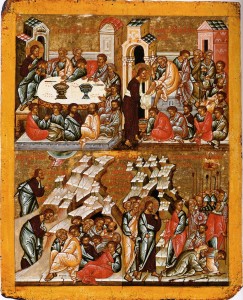
Holy Thursday, 15th c. Russian
SIMPLE THINGS
Maundy Thursday
There is something about the Maundy Thursday liturgy that always connects with my deepest feelings . . . In fact, I think it is probably my most favorite liturgy of the entire Church Year! Maundy Thursday is so very different in tone and mood. It is something quite “other” than the deep solemnity of Good Friday, or the dark brilliance of Midnight Mass at Christmas, or even the glorious joy of the Easter Vigil.aPerhaps what I most like about it is that it is so very ordinary, so very simple.
When I was a sister of the Order of St. Helena, the Convent celebrated Holy Week according to the ancient traditions of the Church, following the Monastic schedule: We all kept complete silence for the entire week (except for the Offices—Morning and Evening Prayer, Noonday Prayer and Compline). Even guests who came to spend the week with us entered into the silence, which seemed to deepen as the week went along and we read all the scriptures telling of Jesus’ last week: His grand entrance into the City on Palm Sunday, his teaching in the Temple, and his driving out the money-changers. . . . It was all like being a participant in a grand drama.
Yet when we came to the afternoon of Maundy Thursday, the mood shifted: our silence was ended as we bustled around in the kitchen, preparing an Agape Feast of roast lamb and all the trimmings. Even the chapel and sacristy became places of heightened activity: polishing the best silver chalice and preparing for the vigil through the night.
But even in the bustling around, there was an awareness that what we were doing was so ordinary, so simple
Ordinary, simple activities that all of us, as single people and families, have been doing this night also: We’ve had our evening meal, perhaps leisurely, perhaps rushed, yet all of us doing what we do every night of our lives . . . Gathering around our kitchen tables at the close of the day, perhaps with family, or friends; gathering to eat our meals, to talk, to be with one another.
Now, in the liturgy, we are about to do another simple thing: to give rest to the weary by reaching out and touching each other—by bending some tired, aching backs to lean over and touch gently some tired, aching and dirty feet. Simply to do for another what we might wish to have done for our own weariness.
Then we will gather again around this second table to share in another very simple meal: a morsel of bread, a sip of wine.
And then the night will close down, and we will each go off our separate ways—some to sleep, some to work, some to watch and pray.
Simple things: eating, touching, praying.
Simple things which have been done down through the ages from the time the world began—in different ways, in different times, even to different Gods—but still such simple things.
Pre-historic cave dwellers sharing a successful hunt around a fire—eating quickly, speaking but rarely, drawing close to one another as the night draws in with its unknown terrors.
A wandering Aramean herdsman—Abraham—offering curds and milk and a young calf to three strangers by the oaks of Mamre, and receiving their commiserations about a barren wife named Sarah.
City dwellers, aliens in a foreign land, preparing to flee their oppressors, eating in haste of roasted lamb, and bitter herbs, and unleavened bread.
Within my own memory, the family gathering at the end of a long day, eating our dinner, sharing the news of the day, simply being in the presence of one another in quiet communion and joy. And then we’d adjourn to the living room to sit by the fire, read the paper, do homework. And so often, Daddy would ask my sister or me to rub his feet, tired from standing in long hours of surgery or from walking miles of irrigation ditches on the farm.
Simple, ordinary things of eating…touching…loving.
And yet so very profound.
These very simple things are so full of meaning and power and love that they have undergirded the whole of Western civilization as we know it. Ordinary actions meeting ordinary human needs, becoming the most powerful sacraments of God’s love.
Simple things we do, but O! such a wealth of riches held for us in their very simplicity.
We think of Maundy Thursday as the beginning of the Triduum—the “Three Days” of Maundy Thursday, Good Friday, and Holy Saturday: In the monastic tradition there is an intensification of silence, a paring down of the Office to its bare bones of psalms and collect; and then the heady joy of a talking dinner, a joy is muffled by the knowledge of the hours that lie before us . . . the hours when each of us would “watch one hour” before the reserved Sacrament, in memory of the dark hours Jesus spent in the Garden of Gethsemane, the hours during which his disciples fell asleep.
Maundy Thursday is also the time in which we celebrate the centrality of the Eucharist—of its institution on this night—of the words of Jesus: “This is my Body. This is my Blood.”
We move from dinner that feeds our bodies to the Eucharist that nourishes our souls. We move from the light-hearted banter of late afternoon to the solemn joy of touching one another, hands to feet.
We move from the communal sharing of the dinner table to the communion of the altar—and then we move from that union with one another to the solitude of our own homes, some of us perhaps spending an hour in prayer this night, as we too, remember Jesus in the Garden as he prayed, “Father, let this cup be taken from me . . .
Through all these activities—family meals and the washing of feet, and the sharing of Holy Communion, there runs a single thread, a single meaning: That is the command of this night: To love one another.
Just as the most simple actions become such profoundly grace-filled sacraments, so too does that single thread of love lead us to many levels, in many directions.
It leads us to the immense love brought to us through the faithfulness of the church over the ages; to the love that reaches out to embrace the penitent and the sorrowful; to the love that restores both the individual and the community.
There is a wonderful moment in the old Roman rite of reconciliation on Maundy Thursday, in which the penitents (barefooted and carrying unlit candles) are presented by the archdeacon to the Bishop at the door of the church. The archdeacon says,
“The acceptable time is at hand, the day of God’s mercy and man’s salvation, when death is destroyed and eternal life begins—For, although there is no moment when God’s goodness and love are absent, now in his mercy his forgiveness of sins is more abundant . . . Now our community is increased by the reborn, our numbers augmented by those returning. The waters cleanse and so do tears; therefore we rejoice at those who are first called, and our joy is great when sinners are forgiven.”
“Waters cleanse, and so do tears.” . . . This is the sign of that great love which calls us here tonight. If we are to be fully human, fully who we are called to be by God, we often need to weep with one another, to forgive one another, to be cleansed and healed together.
We also need to nourish one another. How well do we truly know and care for one another? We may live, work, eat, and pray together but so often we may walk in loneliness in the midst of community. This, too, is where we are led by that great thread of love: to the love that truly nourishes the other—”This is my Body, given for you.” To the love that draws us all into the one great bond of love in Christ Jesus. And above all we are drawn to the immense love of the Father that sustained Jesus in the loneliness of the Garden, and that sustains us in our loneliness.
It is not easy to discover this kind of loving nourishment. Perhaps it is particularly difficult to find in a one-sex, celibate community such as a monastery or convent; perhaps it is also difficult to find in ordinary families, in ordinary communities. Yet that great difficulty is also our greatest opportunity for truly finding and sharing the nourishment of love.
I don’t know exactly how it is done, but perhaps an experience I had years ago may help reveal it. One morning, while celebrating Eucharist at the convent, I looked at the wine in the chalice and saw something I had never before seen. In the center of the wine was a light, through which it seemed I was able to gaze into the whole heart of the universe. Then I realized that the light was formed by a perfectly symmetrical reflection from the four sanctuary lamps.
Because of the angles at which the light was reflected, it could only be seen when one stood in the place of the celebrant. I could not gather the sisters around the altar and show them this light all at the same time. It could only be seen by someone standing in one particular spot. It felt very lonely when I realized no one else could see what I saw—at least not in that moment. I could only tell others of the Light . . . the Love which I saw in the chalice at that moment.
Perhaps this is a metaphor for the loneliness which so many of us experience in our culture: the loneliness of parent and child; the loneliness of the elderly; the loneliness of the homeless; the loneliness of the ethnic or sexual minority. . . The love that we each see can only be seen by our own eyes; and yet we are drawn by that same love to carry it to each and every one of us. If we do not share the love that sustains our loneliness, if we do not nourish one another with that love, we too will die, we too will be abandoned and hungry.
Simple things we do this night:
Eating
Touching
Praying
Simple things which are so profound, and which are rooted in Love. Simple things which each of us sees from our own eyes, in particular and individual ways. Simple things which speak of the Love of God . . . but only if we speak, only if we eat together, touch one another, pray together.
Jesus says to his disciples on this night, as he washes their feet: “Do you know what I have done to you? You call me Teacher and Lord; and you are right, for so I am. If I then, your Lord and Teacher, have washed your feet, you also ought to wash one another’s feet. For I have given you an example, that you also should do as I have done to you.”
Simple things.
Amen.
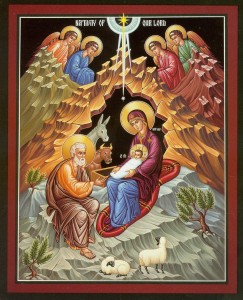
CHRISTMAS, 2015
I do not need to begin this Christmas meditation with a listing of the raucous and hurtful noises filling our world—you know it as well as I do.
And so this year my prayer for us all, near and far, friend and foe, beloved and stranger, is simply that this season of celebrating the birth of our Lord Jesus Christ might open each of our hearts to the Holy Silence of an innocent Babe born into His Father’s World, a world of beauty and abundance, a world of joy and peace, yet a world so often torn asunder by our inability, our unwillingness to recognize the eternal gifts given to all humankind, to all creation.
The Gospel of John says, “The light shines in the darkness, and the darkness has not overcome it.” Perhaps another way of saying that could be, “The Silence swallows the noise, and the noise has not overcome it.”
COME, HOLY SILENCE
Come, Lord Jesus, Come:
Fill the earth with
Holy Silence
Holy Silence-
gift of gentleness and peace
to terror and cruelty;
Holy Silence-
gift of humility and love
to arrogance and pride;
Holy Silence-
gift of compassion and joy
to hate and revenge;
Holy Silence-
gift of calm and hope
to fear and despair;
Holy Silence-
gift of strength and faith
to doubt and distrust.
Come, Lord Jesus, Come:
Fill our hearts with
Holy Silence
SC+ © 2015
He is risen, indeed! Alleluia!
It is Easter morning, and our hope is ever born anew.
And inexplicably–only God knows why–this poem, prophetic, apocalyptic, and eschatological as it is, springs to mind.
The Second Coming
W.B. Yeats in 1919
Turning and turning in the widening gyre
The falcon cannot hear the falconer;
Things fall apart; the centre cannot hold;
Mere anarchy is loosed upon the world,
The blood-dimmed tide is loosed, and everywhere
The ceremony of innocence is drowned;
The best lack all conviction, while the worst
Are full of passionate intensity.
Surely some revelation is at hand;
Surely the Second Coming is at hand.
The Second Coming! Hardly are those words out
When a vast image out of Spiritus Mundi
Troubles my sight: somewhere in sands of the desert
A shape with lion body and the head of a man,
A gaze blank and pitiless as the sun,
Is moving its slow thighs, while all about it
Reel shadows of the indignant desert birds.
The darkness drops again; but now I know
That twenty centuries of stony sleep
Were vexed to nightmare by a rocking cradle,
And what rough beast, its hour come round at last,
Slouches towards Bethlehem to be born?
May you know the hope of the risen Christ this day.
Susan Creighton+
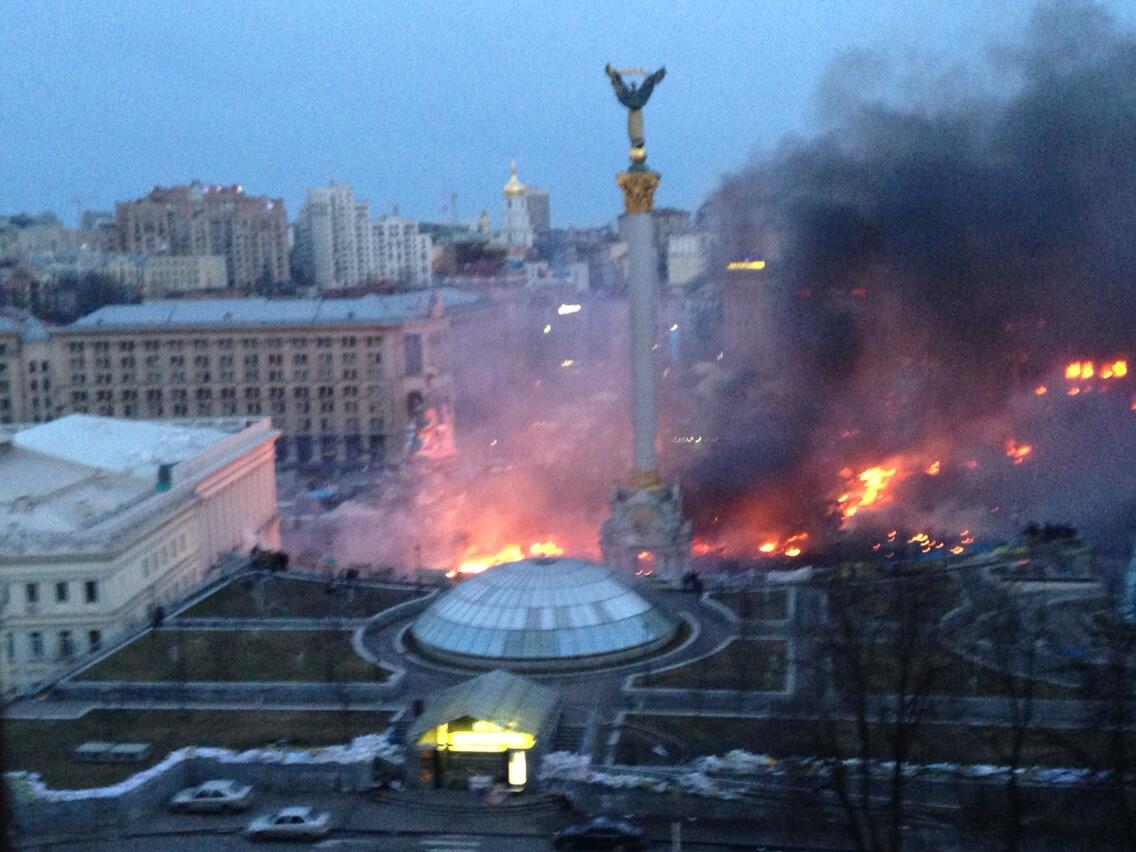
For Ukraine…and Syria…and Egypt…and Africa…and Venezuela…
You pour Your holy oil into the stars, O Holy Spirit,
and out of senseless conflagrations
You make vigil lamps before the Glory of Heaven.
Pour Yourself into my soul also,
and out of a passionate conflagration
make a vigil lamp before the heavens.
St. Nikolai Velimirovich, Prayers by the Lake. 2nd Edition. Prayer XX
(I don’t pretend to understand all the dynamics here, but on a 1993 visit, Kiev entered my heart…she has known such violence–in WWII, the slaughter of Jews, and many others at Babi Yar, and untold other wars and famine and injustice over the ages…..we can only pray–and offer their suffering as vigil lamps before the Glory of Heaven.)
Dwelling in the Psalms, Part 1
Dwelling in the Psalms, Part 2
Dwelling in the Psalms, Part 3
Part 4
HOLY DWELLING – Saturday and Sunday
As we continue to pray the psalms through the week, and through the architecture of the church, I am reminded of two stories from many years ago, one told me by a friend and another which I witnessed directly. In the first of these, some time in the early 1970’s, my friend’s son, perhaps only four or five years old, said to his mother one day after church, “Mama, what’s happening up there in front behind the fence (the altar rail) is what’s really REAL, isn’t it?” His child’s innocence enabled him to perceive the real presence of Christ in the bread and wine in a way that most of us struggle to ever know. In the second instance only a few years later, I was attending a meeting of Episcopal religious orders held at one of the more traditional convents. We gathered for Eucharist in a small chapel, and the celebrant wanted to remove the free-standing altar rail so that we could all gather around. An elderly nun was serving as thurifer, and she simply could not bring herself to step into the sanctuary proper across the line where the rail had stood. At the time, I was appalled that she was so locked into the ‘old’ way of doing things. Now I realize that her actions (perhaps unconscious, but nevertheless genuine) were rooted in an awareness that our souls must be sufficiently prepared to cross that sacred threshold into the Heart. Would that the rest of us (especially we clergy!) had the humility to recognize the sacred ground of the Altar.
For the Altar within the Sanctuary is the preeminent symbol of the Heart, where God dwells, the site within the human soul wherein the most profound and exalted contemplation of the Holy Trinity may occur, and it is the destination to which everyone is called. St. John Chrysostom says, “Find the door of your heart, and you will find the door of the Kingdom of Heaven” and The Philokalia calls the Heart:
“the spiritual centre of man’s being, man as made in the image of God, his deepest and truest self, or the inner shrine, to be entered only through sacrifice and death, in which the mystery of the union between the divine and the human is consummated.”
And so, in this arrangement of praying the psalms week by week, over a four week cycle, we will find ourselves on Saturdays focused on the kind of Holy Dwelling best exemplified by the Theotokos, the Blessed Virgin Mary, the original sanctuary of our Lord, as well as on the fullness of virtue and purity to which the soul gradually ascends.
On Sunday, our prayer through the psalms brings us to the praise and worship of God for the ultimate expression of Holy Dwelling in the Resurrection of Christ, as well as giving us hints of theosis, in which as St. Maximus the Confessor says:
“When, urged by love, the mind soars to God, it has no sensation either of itself or of anything existing. Illumined by the limitless Divine light, it is insensible to all the created, just as is the physical eye to stars in the light of the sun.”
Yes, this is the “really, Real” that only an innocent child—or a holy saint—could recognize. Even so, the wonder is that every time we make our way up that long aisle, though the choir, to the altar, and receive in our own hands and mouths the Body and Blood of Christ, we, too, know the “really, Real”; we, too, enter in to Holy Dwelling.
HOLY DWELLING
CONTEMPLATION OF THE HOLY TRINITY
Holy Dwelling finds the Soul increasingly dwelling within her heart, and now, even the mind is quiet and ‘naked’.
Holy Dwelling brings the Soul ever nearer to the goal of her journey in God. Now, she experiences an ever deepening illumination and contemplation of all that is, seen and unseen.
Holy Dwelling brings the Soul to contemplation of the Holy Trinity, moving beyond mere words about God, to the wordless silence of the heart in pure adoration.
Holy Dwelling is found as the Soul enters the sacred altar of the heart, the Kingdom of Heaven, the place where God alone dwells.
| HOLY DWELLING Incarnation / Virtue | |||||
|---|---|---|---|---|---|
| SATURDAY | WEEK 1 | WEEK 2 | WEEK 3 | WEEK 4 | |
| Matins | 2 | 45 | 25 | 12 | |
| 9 | 16 | 82 | 15 | ||
| 85 | 65 | 101 | 96 | ||
| 133 | 113 | 97 | |||
| SATURDAY | WEEK 1 | WEEK 2 | WEEK 3 | WEEK 4 | |
| Vespers | 37, Part I | 1 | 112 | 147 | |
| 37, Part II | 104 | 64 | 41 | ||
| 67 | 131 | 128 | |||
| 145 | 130 | ||||
| HOLY DWELLING Resurrection / Theosis | ||||
|---|---|---|---|---|
| SUNDAY | WEEK 1 | WEEK 2 | WEEK 3 | WEEK 4 |
| Matins | 99 | 19 | 61 | 87 |
| 118 | 23 | 66 | 116 | |
| 117 | 46 | 86 | 111 | |
| 47 | 146 | |||
| 150 | ||||
| SUNDAY | WEEK 1 | WEEK 2 | WEEK 3 | WEEK 4 |
| Vespers | 110 | 107, Part I | 121 | 11 |
| 30 | 107, Part II | 124 | 31 | |
| 34 | 84 | 93 | ||
| 134 | 91 | 98 | ||
Part 3
CONTEMPLATIVE LIVING – Thursday and Friday
It is somehow fitting that today, on the Feast of the Transfiguration, this post brings us to CONTEMPLATIVE LIVING. Peter and James and John had walked the path of FAITHFUL LIVING during their years as disciples of Jesus. Now, as Jesus led them up a high mountain, they were—no doubt unknowingly!—ascending with their Lord into a new realm of being, a higher state of consciousness, if you will, and into a more spiritually sensitive aspect of the soul. Now, they were able to perceive the saints (Moses and Elijah), but even more critically, to see with the eyes of their souls the Light of the Transfigured Christ. (How frustrated poor Peter was to discover that he could not contain this vision, this Reality-with-a-capital R, in his booths!)
But back to Dwelling in the Psalms. If we return to the architectural model of the church, having spent our time in the Nave, we move past the Pulpit and Lectern, and (in most traditional buildings) ascend Three Steps, past the Rood Screen / Iconostasis into the Choir.
First, let us look at the Three Steps. In the ancient mystical tradition, these have been seen as signifying mystically our three stages of purification—from external passions of the body (gluttony, fornication, avarice), internal passions of the soul (wrath, despair, and acedia), and finally from passions of our mind (vainglory and pride).
The Rood Screen / Iconostasis is seldom seen in western churches, even if built with a more traditional floor plan. Nonetheless, many medieval churches had some sort of screen or railing between the Nave and the Choir and Sanctuary. (See for example photos by Allan Barton, (see here and here.) In St. Paul’s, Bellingham, WA, where I worship our rather elaborate wrought-iron rood screen has occasionally become a point of controversy, with some congregants loving it, and others feeling that it in some way “shuts them out” from the altar. I recall the first time twenty years ago when I preached at St. Paul’s, my initial reaction was one of being in a prison of sorts! However, I am now a fervent support of the Rood Screen, for I better understand its spiritual significance. Such an architectural feature whether subtle or bold serves to nudge our soul to the awareness that we are moving from the ordinary to the extraordinary, from the visible created order we discern with our five senses to the invisible and intelligible we can only discern with our heart.
And so we come to the Choir. In the medieval churches, this was the territory of the monastics whose lives were dedicated to prayer and contemplation, but to this day the choir is the place where we “pray twice” through our singing. Now, whether singing in the choir or moving through it on the way to receive communion, we open our souls to Illumination and Wisdom, to moving more deeply into the sacred presence as well as to depths of Sacrifice and Redemption.
As a result, the psalms chosen for Thursday and Friday support our soul’s movement into ever deepening understanding (poor word, but it will have to do for the moment) and wonder at the works of God, whether through the awesome gift of creation itself, or through the ultimate gift in the Person of his Son
THURSDAY
CONTEMPLATIVE LIVING
CONTEMPLATION OF THE CREATED ORDER
Contemplation of the Created Order was called by the ancient church “second natural contemplation,” or “contemplation of the book which is read.”
Contemplation of the Created Order initially utilizes our five senses to rejoice in the wonders of God’s works in all creation, from the earth, planets, and stars, to the smallest atom and particle of matter.
Contemplation of the Created Order strengthens as the Soul’s life in God matures and deepens, and we become more deeply aware of the transcendent presence of God in all of creation.
Contemplation of the Created Order continues the process of purification of the Passions of Desire (gluttony and fornication), and deepens the purification of the Passions of the Temper (avarice, sorrow, anger, acedia, vainglory, and pride). This purification helps the Soul to develop a higher degree of Dispassion, and transformation of the vices into virtues.
Contemplation of the Created Order also brings us to a fuller experience of illumination in the eternal truth of God’s Word as we give praise for all His works of redemption.
| CONTEMPLATIVE LIVING (Contemplation of the Created Order) Illumination / Wisdom | |||||
|---|---|---|---|---|---|
| THURSDAY | WEEK 1 | WEEK 2 | WEEK 3 | WEEK 4 | |
| Matins | 63 | 29 | 71 | 75 | |
| 27 | 72 | 148 | 94 | ||
| 92 | 48 | 149 | |||
| THURSDAY | WEEK 1 | WEEK 2 | WEEK 3 | WEEK 4 | |
| Vespers | 18, Part I | 49 | 73 | 132 | |
| 18, Part II | 62 | 90 | 115 | ||
| 126 | 127 | ||||
FRIDAY
CONTEMPLATIVE LIVING
Contemplation of the Heavenly Jerusalem
Contemplation of the Heavenly Jerusalem was known in the ancient tradition as “first natural contemplation,” or “contemplation of the intelligibles.” Here, the Soul moves from a contemplation of the visible creation, perceived by the senses, to the contemplation of the invisible, or unseen—those things which can only be perceived by the mind. (Or more specifically, the Nous—not just the rational, deductive mind.)
Contemplation of the Heavenly Jerusalem develops when the Soul comes to an even more mature level. Now we realize that ‘the Kingdom of God is within,’ and we enter more deeply into the silence of our Souls.
Contemplation of the Heavenly Jerusalem continues the (life-long) process of purification, but now there is likely more emphasis on the passions of pride and vainglory, as well as the Passions of the Mind, when we encounter the temptations of false visions, prophecy, and revelations.
Contemplation of the Heavenly Jerusalem brings forth a flowering of the ‘Fruits of the Spirit’, with ever-deepening love, joy, peace, and wisdom.
| CONTEMPLATIVE LIVING (Contemplation of the Heavenly Jerusalem) Sacrifice / Redemption | ||||
|---|---|---|---|---|
| FRIDAY | WEEK 1 | WEEK 2 | WEEK 3 | WEEK 4 |
| Matins | 79 | 50 | 122 | 77 |
| 22 | 20 | 55 | 51 | |
| 138 | 143 | |||
| FRIDAY | WEEK 1 | WEEK 2 | WEEK 3 | WEEK 4 |
| Vespers | 89, Part I | 35 | 140 | 123 |
| 89, Part II | 125 | 129 | 88 | |
| 28 | 139 | 103 | ||
Dwelling in the Psalms, Part 1
Dwelling in the Psalms, Part 2
